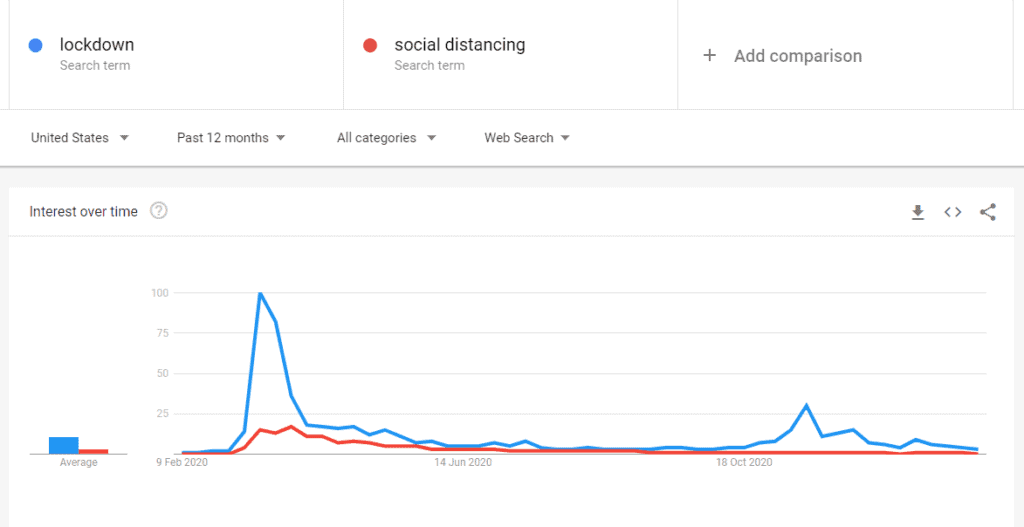Along with all the other problems, Covid-19 communicators are up against a wall of words. Experts are doing their best, designing strategies to bring down the number of cases and employ public cooperation, but sometimes, a good strategy seems to get lost in bad words. Is “lockdown” really the best we can do? Is “social distancing” better than “physical distancing? It’s a debate that seems to fall low on the current priority list, but maybe we should pay it more attention.

Peter Sokolowski, editor-at-large of the Merriam-Webster dictionary, said that “big events have the power to change our language itself” — and of course, language also has the power to change events.
Covid-19 is a major event in recent history, and “lockdown” is one of the words to watch. According to MarketWatch in November, “Collins Dictionary recently bestowed its word-of-the-year title on ‘lockdown.’” People are being introduced to phrases and nomenclature particular to a pandemic they never saw coming. Chicago Tribune columnist Christopher Borrelli said traditional words lacked the power of living in this extraordinary time. Borrelli said that:
“Many of the words we now say and hear all day long, every day, over and over, we had never even heard. We have acquired a large new toolbox of linguistic neologisms, a fresh vocabulary…Science gets explained with epidemiological mashes, while sociological jargon takes flight overnight…at the zip of Zoom.”
Honing in on lockdowns: What did lockdown connote in a pre-Covid world? The connotation and context were all negative, unruly. It may have referred to rioters who needed to be locked down, for instance. If they were to defy a lockdown order and walk free, they would be punished by the authorities who forced them to lockdown. Is the word itself, perhaps, a part of the reason why some people reacted so violently against it?
One unsurprising reaction during Covid is to defy the order if you give a hoot about the principles of freedom, liberty and the pursuit of beach parties.

Ism fever
We’re all being treated (or mistreated, depending on the view) to a game of language potentially subverting policy. The lockdown notions have become politically loaded in many people’s minds, especially in societies where polarization runs high. For some, disobedience to lockdowns grew to be synonymous with courageously fighting fascism, communism, socialism, or whatever ‘-ism’ was, in the eyes of the beholders, toxic. For others, it was a positive and important public health measure.
By September, Tim Harford, writing in Financial Times, apparently had his patience tested thinking about word usage like “lockdown” when talking about Covid. With all the global chatter, he said it was far from obvious what a lockdown was supposed to mean, “and the lack of clarity risks making a bad situation worse.” The most obvious risk, he added, was “people become too confused and irritated to follow the rules.” Added to the ambiguity of the word, it was becoming “yet another ideological cleavage point.”
That was last year; two months into the new year, it is quite obvious that words, like vaccines, are making a difference in how public health efforts can be derailed. Brian Castrucci, CEO of the de Beaumont Foundation, said “it’s never been more important for health leaders to understand the perceptions of Americans and modify their language accordingly.” A recent poll of Americans from Frank Luntz in partnership with the de Beaumont Foundation reflected the concern in its title, “Changing the COVID Conversation.”
Participants were 1,100 in number and their responses delivered some idea about reactions on health issues and decisions. Luntz: “The words our leaders are using need an immediate upgrade.” The poll highlighted the need to change the “pandemic lexicon” in order for people to adopt life-saving public health precautions.
Americans had a more positive reaction when rules and regulations to address COVID-19 were called “protocols” rather than “mandates,” “directives,” “controls,” or “orders.” Respondents had a more positive reaction to “a stay-at-home order” than a “lockdown” or “aggressive restrictions.”
Very small numbers
Ultimately, clarifying lockdowns is not an impossible dream. Left to scientists familiar with the rises and falls of pandemics, it can be simple. In a December interview with Dr. John Whyte, chief medical officer at WebMD, interviewers sought to clarify what was meant by ‘lockdown’. Scientist Yaneer Bar-Yam, the guest, responded and kept it simple.
“So it actually– starts with just understanding the transmission, right. We all know this by now. It transmits when somebody breathes out and someone else breathes in. And the point is that the virus dies if it doesn’t transmit. So we just have to stop it from transmitting. And the way we do that is by making sure that we’re not near other people. It’s that simple.”
He said that the idea was “we’re just going to go all-out. And it turns out that the advantage of doing this is that it goes away very fast. It actually only takes about four to six weeks for even a very large outbreak to get down to very, very small numbers if we do it all-out.” Bar-Yam asked a question to answer a question. “And so why would we want to live with this for six months, three months, six months. We’ve been living with it for a long time already. So if you’re tired of it, the solution should be to get rid of it. If there wasn’t a way to do that, then, well, there isn’t a way to do that. But it turns out that there is, and it’s been shown in multiple countries. The analysis shows it. The experience shows it. So that’s really what we want to do. We want to get rid of it.”
If words count in managing public response to this health crisis, replacements for ‘lockdown’ could be ‘free-up’, or ‘all-out’ — or even ‘all-in’.


